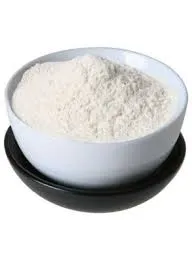
Dec . 17, 2024 06:37 Back to list
what does hpmc stand for
Understanding HPMC What Does It Stand For?
HPMC, short for Hydroxypropyl Methylcellulose, is a remarkable chemical compound that plays a vital role across various industries, particularly in pharmaceuticals, food, and construction. Understanding what HPMC stands for, its properties, and its applications can provide valuable insights into why it is increasingly popular in different sectors.
What is HPMC?
HPMC is a semi-synthetic polymer that is derived from cellulose, which is the primary component of plant cell walls. Through a series of chemical modifications, cellulose is transformed into HPMC by substituting hydroxypropyl and methyl groups into the cellulose backbone. This process enhances the solubility and functionality of the compound, allowing it to be used in a wide range of applications.
Properties of HPMC
HPMC is known for a variety of properties that make it incredibly useful
1. Water Solubility Unlike cellulose, HPMC is soluble in cold and hot water, forming a gel-like substance. This property is crucial for applications where a consistent and stable solution is required.
2. Viscosity HPMC can alter the viscosity of solutions remarkably, which is particularly beneficial in formulating products like gels, emulsions, and suspensions.
3. Film-Forming Ability HPMC can create thin, uniform films when applied to surfaces. This capability is employed in coatings and encapsulation processes.
4. Biocompatibility HPMC is non-toxic and biocompatible, making it suitable for pharmaceutical uses, particularly in drug delivery systems.
what does hpmc stand for

Applications of HPMC
Given its diverse properties, HPMC finds applications in several domains
1. Pharmaceuticals HPMC is widely used as a binder in tablets, ensuring that the ingredients adhere together effectively. It is also used in controlled-release formulations, allowing for the gradual release of active ingredients in the body. Additionally, HPMC is utilized as a suspending agent in liquid medications.
2. Food Industry In food production, HPMC serves as a thickening agent, stabilizer, and emulsifier. It helps improve the texture and consistency of various food products, including sauces, baked goods, and dairy items. Furthermore, it is often used in vegetarian and vegan products as an alternative to gelatin.
3. Construction In the construction industry, HPMC is incorporated into cement-based formulations. It enhances the workability, water retention, and bonding properties of mortar and plaster, making it easier for builders and contractors to work with various materials.
4. Cosmetics HPMC's film-forming ability and thickening properties make it a popular ingredient in cosmetic formulations, such as creams, lotions, and gels. It helps improve product texture and stability.
5. Personal Care Products Similar to its use in cosmetics, HPMC enhances the texture and stability of personal care products, ensuring a pleasant user experience.
Conclusion
In summary, HPMC, or Hydroxypropyl Methylcellulose, stands out as a versatile compound with significant importance in multiple industries. Its unique properties, including water solubility, viscosity modification, and biocompatibility, make it an essential ingredient in pharmaceuticals, food production, construction, and various consumer products. As industries continue to evolve, the utilization of HPMC is likely to expand further, solidifying its status as a key player in modern formulations. Whether you are a professional in these fields or simply a curious learner, understanding HPMC offers valuable insight into the innovative world of chemical applications.
-
Versatile Hpmc Uses in Different Industries
NewsJun.19,2025
-
Redispersible Powder's Role in Enhancing Durability of Construction Products
NewsJun.19,2025
-
Hydroxyethyl Cellulose Applications Driving Green Industrial Processes
NewsJun.19,2025
-
Exploring Different Redispersible Polymer Powder
NewsJun.19,2025
-
Choosing the Right Mortar Bonding Agent
NewsJun.19,2025
-
Applications and Significance of China Hpmc in Modern Industries
NewsJun.19,2025







